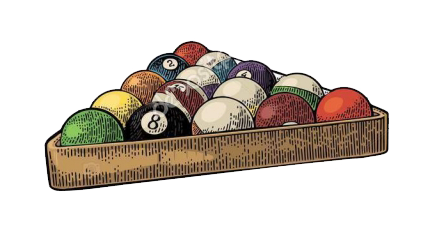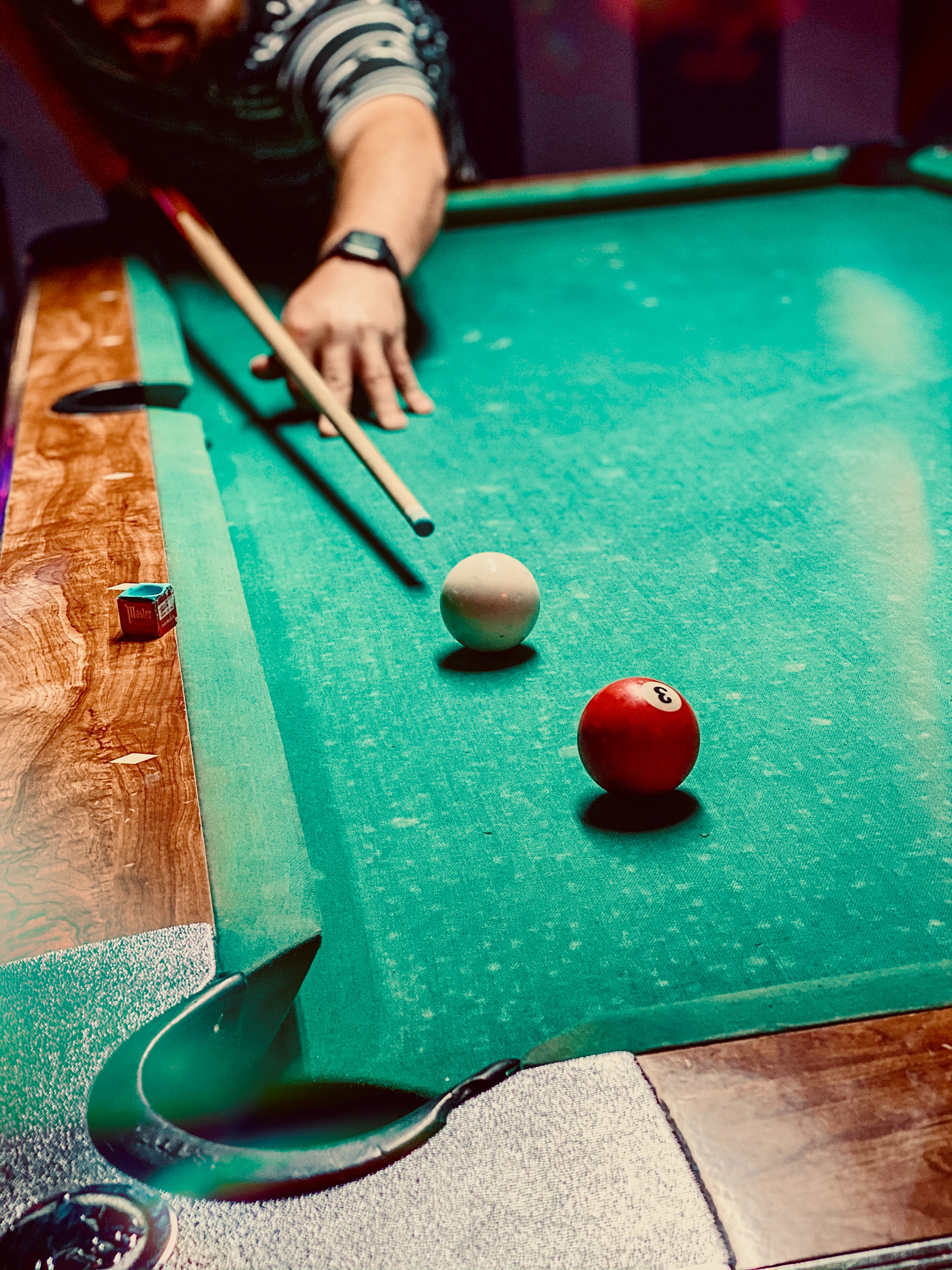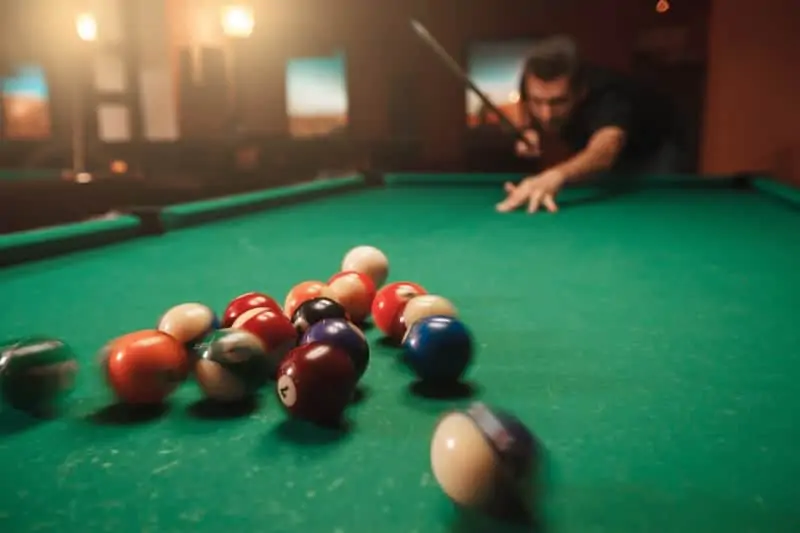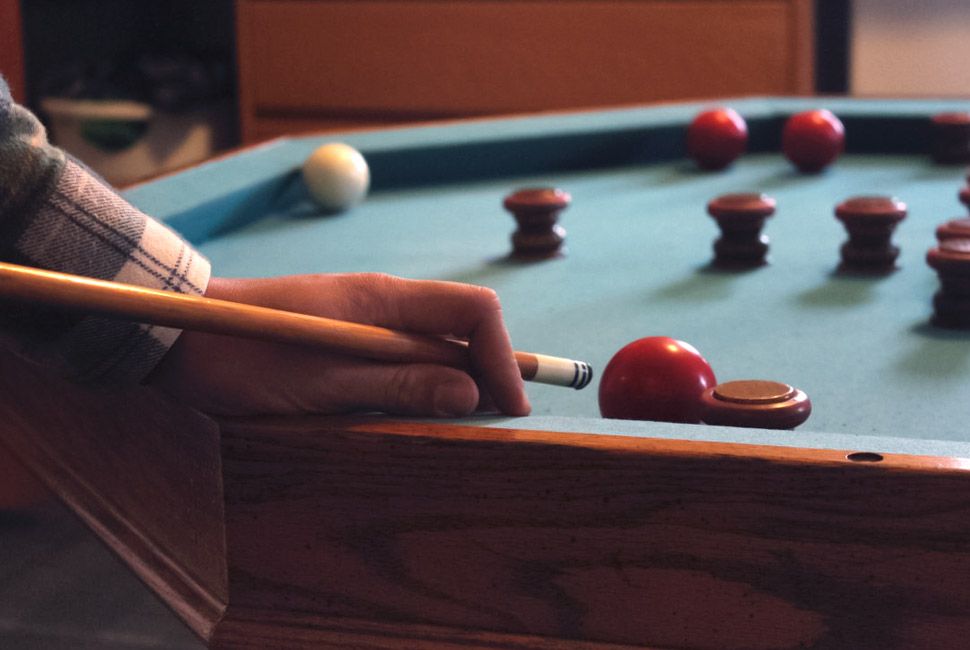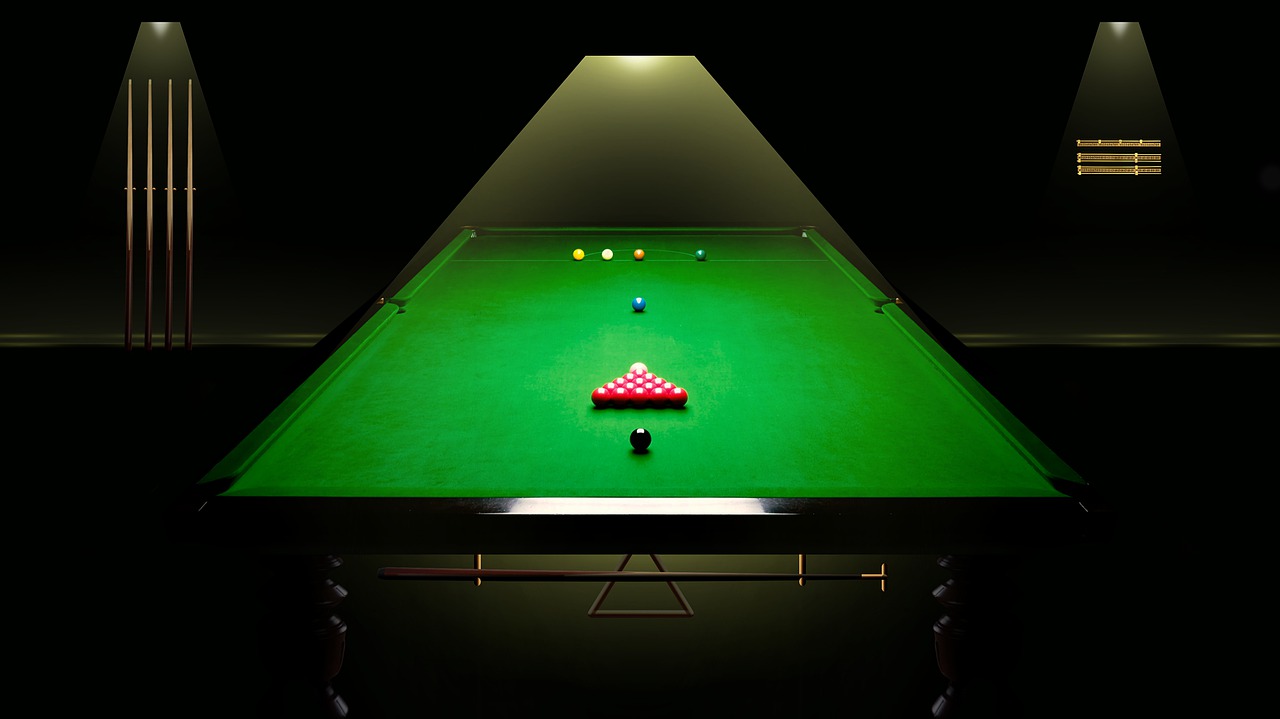As you position your cue with a look of steely determination, preparing to make a break, you might not think about the history of the green-felt table in front of you. This game, with its chain of multicolored balls, intricate strokes, and a dash of geometry, has a rich and varied lineage tracing back centuries. Evolving from a game strictly for aristocrats and kings, billiards has over the years trickled down to the general public, fast becoming a beloved pastime in pubs and lounges around the world. In this article, we will take you on a captivating journey of how billiards emerged from the grandeur of King Louis XIV’s court to your local pool hall.
Part I: Origins of Billiards
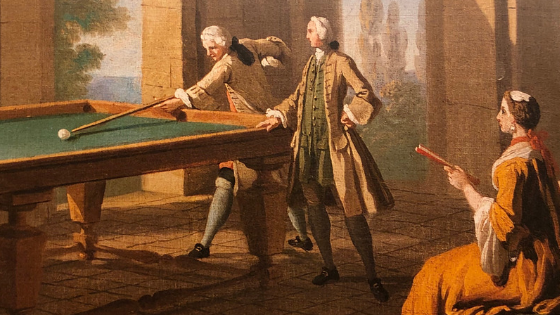
The realm of billiards had more humble beginnings than one might imagine. Early forms of the game emerged during the 15th century in Northern Europe, most likely in France. Why such a specificity of location, you might ask? The clue is in the very name itself. The term ‘billiard’ is believed to hark back to French words ‘billart’ or ‘bille’, meaning ‘stick’ or ‘ball’ respectively.
What began as a simple outdoor game bore a striking resemblance to croquet. Men of stature would engage in a leisurely bout on a lush green lawn, deftly rolling wooden balls with the surreptitious aim of making them go through tiny wired arches. However, as the chilling winter swept through Europe, the participants sought to replicate the game within the comfort of their indoor heat. The first known indoor billiard table, with a boundary line enclosing an area to keep the balls rolling within it, was noted in the 1470 inventory of King Louis XI of France.
Billiards was initially an exclusive game where the common public would barely get a glimpse. It was primarily the nobles and aristocrats who reveled in the game, courting the spheres across the green expanse of the table. It was considered a refined and cultured pursuit, a testament to chivalry and grandeur, much like the horse-riding knights of yore.
The game was growing popular among divine royalties, who saw it as more than just a sport. It was a proclamation of their societal standing, their command over intricate strategies, and above all a medium to flaunt their royal extravagance. As the aristocrats and elite started to embrace it, the game gradually began to resemble the modern billiards we know today. The green-clothed table, previously just outlined to keep the balls bounded, was filled entirely, making the game more intriguing and captivating.
But the billiards table was not just a medium for relaxation and leisure for the royals and aristocrats. It was also counter-intuitively a war field where intellectual battles were fought, alliances formed, and treaties sealed. However, as all things evolve, so did the game and its perception. Let’s look at how the game garnered royal favor in the following sections.
Part II: The Game of Kings
The narrative of billiards was being rewritten as European royalty fell entranced by the game. The seeds of the close relationship between billiards and power were sown as early as the turn of the 16th century. Billiards was not merely a game of balls and cues anymore. It rapidly evolved into a ‘Gentleman’s Game’, a badge of honor more prestigious than mere skills.
The name most often associated with this era of the billiards history is King Louis XIV of France, known to historians as the ‘Sun King’. Fascinated by its charms and complexities, the Sun King brought the game into the limelight during his reign in the late 17th century. Billiards tables began to grace the hallways of Versailles, reflecting the game’s rising prominence and acceptance among the elite.
Even outside France, the game was luring in the influential forces. The first billiards room was constructed in England in the realm of King James. As centuries rolled on, the billiards table became a must-have furniture in the palaces across Europe, taking the game into the mainframe.
Not just limited to King Louis XIV, many key historical figures were known to be billiards admirers, adding to its popularity and mystique. It is said that Napoleon Bonaparte would engage in the game to clear his strategic mind, or to mull over crucial decisions while affecting the course of European history.
So, how did a game, once reserved for royalty and the elites, slowly began to trickle down into the hands of the everyday commoner? Let’s delve into this transition in the next section.
Part III: Evolution of the Game
As enlightenments shook the pillars of societal structures during the late 18th and early 19th centuries, billiards too was not left untouched. The rules, equipment, and even types of games started evolving, marking the beginning of some fundamental changes for the sport.
During the industrial revolution, the introduction of slate as the material for the billiard table’s bed and the development of vulcanized rubber for the cushions revolutionized the game’s dynamics. These changes paved the way for refinements in shots and rules, bringing the game closer to the modern variations we see today.
The game was no longer exclusive to the French table. By the early 19th century, billiards had started transforming into more than one variant, each with its own unique style and rules. English Billiards gained traction in Great Britain while in the United States, Four-Ball and Straight Pool led the pack. The invention of new cue tips made from leather allowed players greater control over the balls, resulting in the introduction of spin or ‘english’.
While these developments were significant, it was the birth of Snooker in the later half of the 19th century, that garnered a wave of popularity unimaginable before. Conceived by British Army officers stationed in India, snooker was a full-fledged version utilizing all the colours known in a typical billiards game and with its unique set of scoring rules.
So, in the midst of all these transformations, how did billiards manage to seep into the life of the typical man? The answer lies in the next section as we explore how changing society affected the widespread acceptance of billiards.
Part IV: Billiards and the Changing Society
While billiards continued to evolve and branch into various offshoots, an equally significant shift was looming on the horizon - a shift in the game’s societal reception. The changing social fabric during the late 18th and 19th century - largely influenced by the French revolution and ensuing societal changes – saw billiards experience a steep surge in popularity among the middle classes.
The Industrial revolution was a game-changer. As working classes and commoners began to enjoy more leisure time and disposable income, they eagerly sought activities to fill their newfound spare hours. Billiards, with its strategic charm and royal backstory, was a natural choice. From the exclusive alcoves of the aristocracy, billiards tables began their slow but inevitable march into common recreational spaces, pubs, and pool halls. This period of transition was pivotal, marking the start of billiards as we know it today - a game for the people, by the people.
The democratization of billiards was also aided by technological advancements in manufacturing. Slate, which had been previously scarce and expensive, soon became more affordable and available, resulting in a boom in billiards table production. Pubs and taverns began to invest in these tables, and billiards became a common sight in these establishments across Europe and North America.
The rise in popularity was so rapid and extensive that by the end of Victorian times, billiards competitions were being held in community centers, local halls, and even churches! Billiards had finally managed to break free from the shackles of being a luxury game for the elite, paving its way into the heart of the common man. But the tale of this captivating game doesn’t end there. Let’s take a leap into the modern era in the next section.
Part V: The Modern Era

In this 21st century, billiards continues to enjoy an extremely varied player base, its appeal extending from the informal setting of pubs and pool halls to the grandeur of international sports arenas. While the game itself has not changed dramatically, its players, audience, and the respect it commands, have undergone colossal transformation.
Today, with billiards having diversified into a multitude of variations such as eight-ball, nine-ball, straight pool, and carom, every corner of the globe has its own favored version of the game reflecting their unique cultural fingerprint. From a casual player aiming for the eight-ball in a dive bar in New York, to audiences on the edge of their seats in the arena at the World Snooker Championship in Sheffield, billiards and its modern variations continue to be a global beacon of strategy, skill, and relaxation.
But it is not just the average man engaging in this strategic sport. Many public figures, including politicians and celebrities, have identified themselves as avid fans, further cementing its place in popular culture. The likes of actors Paul Newman and Tom Cruise displayed their passion for the game through acclaimed films like “The Hustler” and “The Colour of Money”. Even political figures such as Barack Obama and Winston Churchill have famously spent time around a billiards table.
Top notch competition takes place globally, at all levels. The World Pool-Billiard Association (WPA) and World Professional Billiard League (WPBL) are just a few of the organizations that offer players a platform to showcase their prowess and fans an opportunity to witness spectacular gaming performance.
From the royal halls of France to the dimly lit rooms of pubs, and finally to the grandeur of international level competitions, billiards continues to court popularity and respect. But what can explain this sport’s timeless appeal? Let’s ponder over that in the conclusion of this historical journey.
The Timeless Appeal of Billiards
One might wonder, what is it about this simple game of balls and sticks that has transcended boundaries of time, class, and geography to retain its firm hold on mankind’s fascination? What draws us to this game, which originated from the grassy plains of Northern Europe, evolved in the tents of French kings, and now finds itself in the glitzy world of international sports and the smoky environs of the local pubs? Let’s take a moment to ponder how a game has withstood tests of time and changing societal structures.
One aspect lies in its simplicity and accessibility. Regardless of the variation, the essence of the game remains the same: propelling balls into pockets. It requires no exorbitant gear or sprawling pitches, just a table, a couple of cues and a set of balls.
However, the real beauty of the game lies in its intricate layers of tactics and strategy. Simply put, billiards is geometry masquerading as sport, an alignment of angles and forces to achieve the correct momentum and direction. It’s a work of physics playing out on a green canvas under the soft gleam of overhead lamps.
The game offers an intriguing cocktail of luck and skill, both of which keep the player and the observer on their toes. The excitement of an unexpected pocket, the despair of a missed opportunity, and the jaw-dropping wonder of a perfectly played spin shot - all happen here.
Over the course of its development, from the elite confines of kings’ courts to the homely comfort of everyday citizens, billiards remains a social game. Whether played among the blue-blooded aristocracy discussing politics, among friends in a bar over a round of drinks, or between professionals amid an excited crowd, billiards consistently offers an avenue for communication and camaraderie.
This journey from kings to commoners, from luxurious mansions to local communities, from the aristocratic sport to an accessible pastime for many, has not been a rapid one. But through all this, the spellbinding charm of billiards remains, bewitching anyone who picks up a cue stick. As long as there is an intrigue in strategy, a thrill of competition, and a joy in mastery, the allure of billiards will continue to endure.
And as the echoes of clashing balls and triumphant roars fill pool halls and arenas, let us remember this long walk that billiards has taken from kings to commoners, adding a new facet of wonder to the game that is so simple, yet so captivating in its complexity. Here’s to a game that defies the limitations of time. Here’s to billiards!
